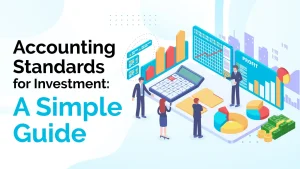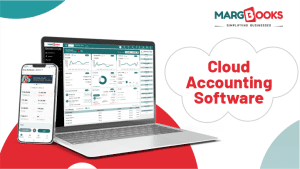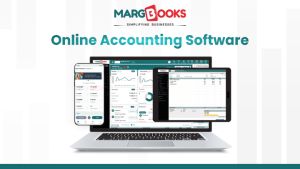Final accounts are crucial for every business as they provide a comprehensive view of the financial health and performance of the company. These accounts include the trading and profit and loss account, balance sheet, and other related financial statements. Preparing final accounts can be a challenging task due to various complexities and problems that can arise. In this blog, we will delve into Final Accounts Problems and Solutions.
Understanding Final Accounts
Before we explore the problems and solutions, it is essential to understand what final accounts are. Final accounts are the end result of the accounting process and are prepared at the end of an accounting period. They consist of:
- Trading Account: This account shows the results of buying and selling goods during the accounting period. It includes information on sales, cost of goods sold, and gross profit.
- Profit and Loss Account: This account provides details about the net profit or net loss of a business by accounting for all revenues and expenses. It includes details on operating expenses, non-operating expenses, and revenue earned.
- Balance Sheet: This statement gives a snapshot of the financial position of the business at a specific point in time, showing assets, liabilities, and equity. It helps in understanding what the business owns and owes.
Common Problems in Preparing Final Accounts
1. Incorrect Trial Balance
One of the primary steps in preparing final accounts is ensuring that the trial balance is accurate. An incorrect trial balance can lead to numerous errors in the final accounts.
Problem: Errors in ledger postings, wrong balancing of accounts, or omission of entries can lead to an incorrect trial balance.
Solution: Regularly reconcile the accounts, verify entries, and ensure that every transaction is recorded accurately. Conduct periodic reviews and audits to detect and correct errors early.
2. Misclassification of Expenses and Revenues
Correct classification of expenses and revenues is critical for accurate financial statements.
Problem: Misclassifying capital expenditures as revenue expenditures or vice versa can distort the financial statements.
Solution: Develop a clear classification system and ensure that all accounting personnel are well-trained in differentiating between capital and revenue expenditures. Regularly review the classifications and make adjustments as necessary.
3. Incomplete or Missing Documentation
Proper documentation is essential for accurate financial reporting.
Problem: Missing invoices, receipts, or other supporting documents can result in incomplete records and inaccuracies in the final accounts.
Solution: Implement a robust document management system that ensures all financial documents are stored and easily retrievable. Regular audits can help identify and rectify any missing documentation.
4. Errors in Adjusting Entries
Adjusting entries are made to ensure that revenues and expenses are recorded in the correct accounting period.
Problem: Incorrect or omitted adjusting entries can lead to misstated financial statements.
Solution: Carefully review all adjusting entries and ensure they are accurate and complete. Use checklists to ensure no adjustments are overlooked.
Detailed Solutions to Final Accounts Problems
Regular Reconciliation of Accounts
Reconciliation involves comparing the internal records with external statements (like bank statements) to ensure consistency.
Steps for Effective Reconciliation:
- Daily Recording: Ensure that all transactions are recorded daily to avoid discrepancies.
- Periodic Review: Conduct weekly or monthly reviews of accounts to detect any irregularities early.
- Automated Systems: Use accounting software that can automatically reconcile accounts and highlight discrepancies.
Training and Development
Continuous training of accounting personnel is crucial for maintaining accurate final accounts.
Key Areas of Training:
- Accounting Principles: Regular training on basic and advanced accounting principles.
- Software Training: Ensure staff is proficient in the accounting software used by the business.
- Regulatory Updates: Keep the team updated on any changes in accounting standards and regulations.
Implementing Robust Internal Controls
Strong internal controls help in preventing and detecting errors and fraud.
Effective Internal Controls Include:
- Segregation of Duties: Ensure that no single individual has control over all aspects of any significant transaction.
- Authorization Controls: Implement authorization procedures for transactions, ensuring that they are approved by the appropriate personnel.
- Regular Audits: Conduct internal and external audits regularly to check for compliance and accuracy.
Use of Accounting Software
Modern accounting software can significantly reduce the risk of errors and streamline the preparation of final accounts.
Benefits of Accounting Software:
- Accuracy: Automated calculations reduce the risk of human error.
- Efficiency: Speeds up the process of preparing final accounts.
- Integration: Can integrate with other business systems, providing a comprehensive view of the business’s financial health.
Common Scenarios and Solutions
Scenario 1: Discrepancies in Inventory Valuation
Inventory valuation can significantly impact the trading account and balance sheet.
Problem: Incorrect valuation of inventory can lead to misstated profits.
Solution: Use consistent and accurate inventory valuation methods (FIFO, LIFO, or weighted average). Conduct regular inventory counts and reconcile with the recorded inventory.
Scenario 2: Depreciation Errors
Depreciation affects the profit and loss account and the balance sheet.
Problem: Incorrect calculation or omission of depreciation can distort financial statements.
Solution: Ensure that depreciation is calculated correctly using the appropriate method (straight-line, reducing balance, etc.). Regularly review and update the depreciation schedule.
Scenario 3: Handling Bad Debts
Bad debts need to be accurately accounted for in the financial statements.
Problem: Failure to account for bad debts can overstate receivables and profits.
Solution: Review the accounts receivable regularly and write off any uncollectible amounts. Create a provision for doubtful debts to anticipate future bad debts.
Conclusion
Preparing final accounts is a complex but essential task for every business. By understanding and addressing the common problems associated with final accounts, businesses can ensure accurate and reliable financial statements. Regular reconciliation, proper training, robust internal controls, and the use of modern accounting software are key strategies in overcoming these challenges. Accurate final accounts not only reflect the true financial health of a business but also aid in making informed strategic decisions.
Also Read
- A Guide to Balance Sheet FormatsAre you a business owner and want to know ‘what is the balance sheet formats?’ if yes, then you have jumped on the right page. Continue reading about the balance sheet in detailed form- A balance sheet is a report… Read more: A Guide to Balance Sheet Formats
- Accounting Standards for Investment: A Simple GuideIn the intricate world of finance, understanding accounting standards for investment is paramount for individuals and businesses alike. Whether you’re an investor looking to navigate the complexities of financial reporting or a company aiming to comply with regulatory requirements, having… Read more: Accounting Standards for Investment: A Simple Guide
- Best Cloud Based Accounting Software in IndiaTraditional ways of managing finances are slowly being replaced by modern cloud based solutions. These new methods bring ease, accessibility, and effectiveness to handling your money matters. In this article, we’ll look at why cloud based accounting software is a… Read more: Best Cloud Based Accounting Software in India
- Best Online Accounting Software in IndiaCertainly! Managing money well is really important for businesses of all sizes. Thanks to online accounting software, the old, tedious task of manually keeping track of finances is a thing of the past. Now, businesses can access advanced tools and… Read more: Best Online Accounting Software in India
- Cloud Accounting Software: 9 Reasons Your Business Needs itFor most small and medium-scale business persons, maintaining finances is the most complicated aspect of their business. Further self-accounting is a lengthy process and tends to human errors that may affect the accuracy and efficiency of data. However, today’s advanced technology… Read more: Cloud Accounting Software: 9 Reasons Your Business Needs it
Frequently Asked Questions
What are Final Accounts Problems and Solutions?
Final accounts problems include incorrect trial balances, misclassified expenses and revenues, missing documentation, and errors in adjusting entries. These issues can lead to inaccurate financial statements, affecting decision-making and compliance. Solutions involve regular reconciliation of accounts, proper training for accounting staff, implementing strong internal controls, and using modern accounting software. Regular audits, clear classification systems, and robust document management practices also help. These steps ensure that financial records are accurate, complete, and reliable, providing a true picture of a business’s financial health and aiding in better decision-making and strategic planning.
What is the significance of final accounts for a business?
Final accounts are very important because they show how well a company is doing financially. They include the trading account, profit and loss account, and balance sheet. These accounts help business owners and stakeholders understand if the business is making a profit or loss, how much it owes, and what it owns. This information is crucial for making decisions about the future of the business, such as investing in new projects, managing debts, and planning for growth. Accurate final accounts also help in meeting legal and tax requirements.
How can incorrect trial balances impact final accounts?
If the trial balance is wrong, it can cause many issues in the final accounts. A trial balance is a summary of all the balances in the ledger accounts, and it should show that the total debits equal the total credits. If there are mistakes, it means there are errors in the financial records. For example, if an expense is not recorded properly, it can make the profits look higher than they really are. This can lead to bad business decisions and problems with taxes. Regularly checking and correcting the trial balance helps ensure the final accounts are accurate.
What are common problems faced in final accounts preparation?
Common problems in preparing final accounts include errors in the trial balance, misclassification of expenses and revenues, missing or incomplete documentation, and mistakes in adjusting entries. These problems can lead to inaccurate financial statements. For instance, if expenses and revenues are not classified correctly, it can give a false picture of the company’s financial health. Missing documents can result in incomplete records. Errors in adjusting entries can misstate the financial period. To address these issues, businesses should regularly review and reconcile their accounts, ensure proper documentation, and provide training for their accounting staff.
How can businesses ensure accurate final accounts?
Businesses can ensure accurate final accounts by regularly reconciling their accounts, training their accounting staff, implementing strong internal controls, and using modern accounting software. Reconciling accounts means comparing internal records with external statements to find and fix discrepancies. Training helps staff stay updated on accounting principles and software. Internal controls, like separating duties and requiring transaction approvals, prevent errors and fraud. Accounting software automates many tasks, reducing human error and improving efficiency. Regular audits and reviews also help maintain accuracy by identifying and correcting issues promptly.
Why is it important to classify expenses and revenues correctly?
Correctly classifying expenses and revenues is crucial for accurate financial statements. Misclassifying them can distort a business’s financial health. For example, treating a long-term investment (capital expenditure) as a short-term cost (revenue expenditure) can affect how the business’s finances look. It might show less profit or more expenses than there actually are. Proper classification helps in understanding the true nature of transactions, aiding better decision-making and compliance with accounting standards. Regular training and a clear classification system help maintain consistency and accuracy, ensuring reliable financial reports.
How does incomplete documentation affect financial accounts?
Incomplete or missing documentation can lead to inaccurate financial records. If invoices, receipts, or other supporting documents are missing, it results in incomplete transaction records. This can cause errors in tracking expenses and recognizing revenues, leading to incorrect profit or loss figures. It can also cause problems during audits and compliance checks. Implementing a good document management system ensures all financial documents are stored securely and can be easily found. Regular audits help identify and fix any missing documentation, ensuring the accuracy and completeness of financial records.
What are adjusting entries and why are they important?
Adjusting entries are necessary to ensure that revenues and expenses are recorded in the correct accounting period. They are crucial for accurate financial statements. For example, if a business earned revenue but hasn’t received the payment yet, an adjusting entry records this revenue in the current period. Common adjusting entries include accruals, deferrals, and depreciation. If these entries are wrong, it can misstate the financial period, affecting the profit or loss figures. Accurate adjusting entries ensure that the financial statements reflect the true financial position of the business.
How does accounting software help in preparing final accounts?
Accounting software helps a lot in preparing final accounts by automating many tasks, reducing the chance of human error, and speeding up the process. It ensures accuracy by automatically calculating figures and checking for errors. It can also integrate with other business systems, providing real-time financial data. Features like automated reconciliation, error detection, and report generation improve efficiency and reliability. Using accounting software frees up time for accountants to focus on analysis and strategic planning, enhancing overall financial management.
What role do internal controls play in accurate final accounts?
Internal controls are measures put in place to prevent and detect errors and fraud, ensuring the accuracy and reliability of final accounts. These controls include practices like separating duties so no single person handles all parts of a transaction, requiring approvals for transactions, and conducting regular audits. For example, the person who records transactions should not be the one who approves them. These controls help maintain accurate financial records, reduce the risk of fraud, and ensure compliance with accounting standards. They are essential for producing trustworthy financial statements.
Why is regular reconciliation of accounts necessary?
Regular reconciliation of accounts is necessary to ensure that the internal financial records match the external statements, like bank statements. This process helps identify and correct discrepancies early, maintaining accurate financial records. Reconciliation involves comparing these records and finding any differences. For example, it helps detect if there are any unrecorded transactions or errors in recording. Regular reconciliation prevents these issues from building up and affecting the financial statements. It also enhances financial control and transparency, supporting better decision-making and ensuring compliance with accounting standards.









